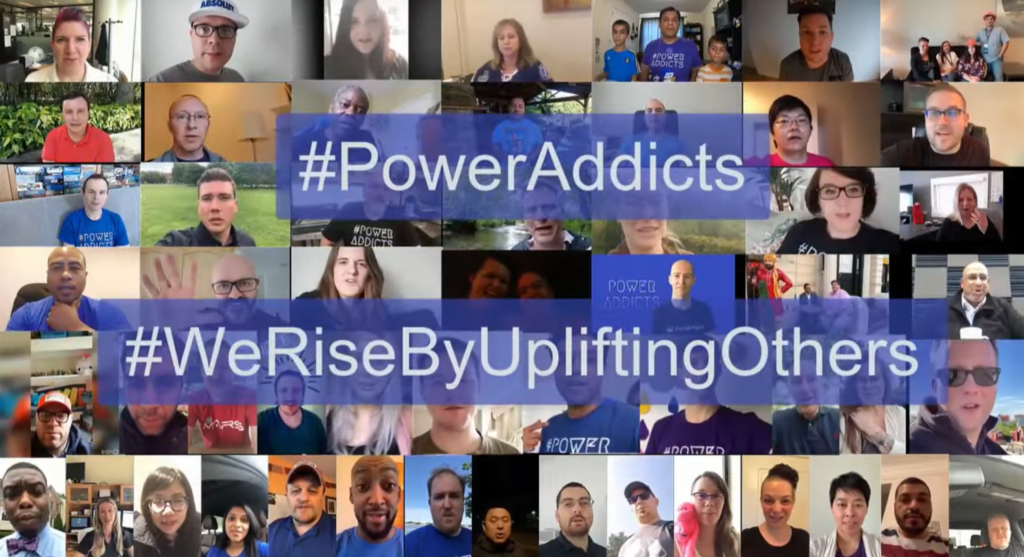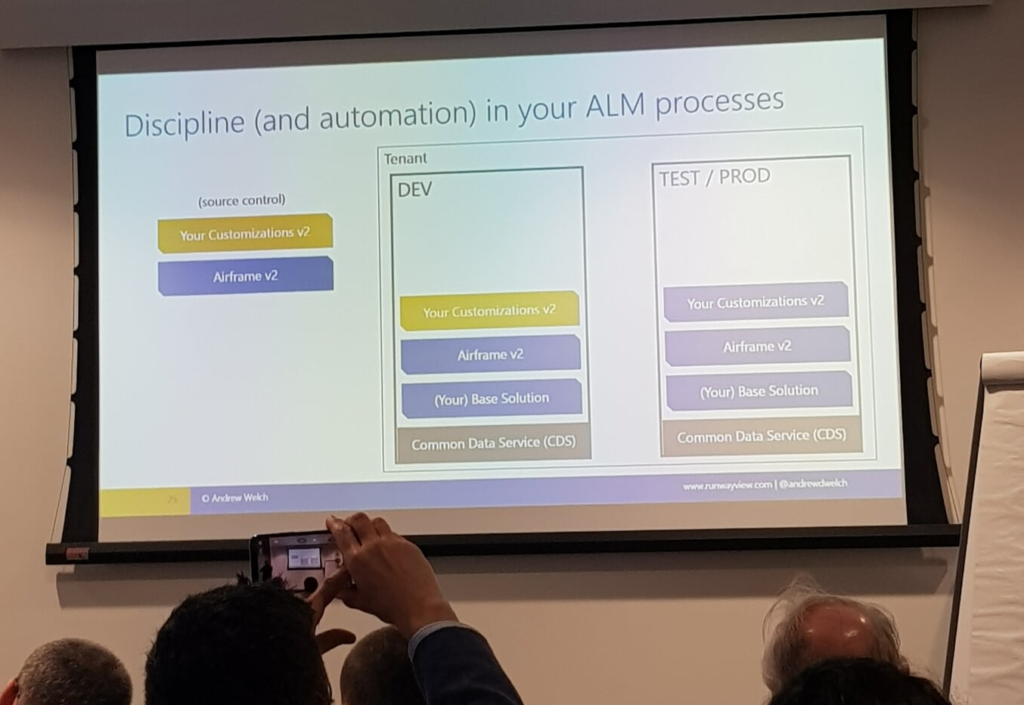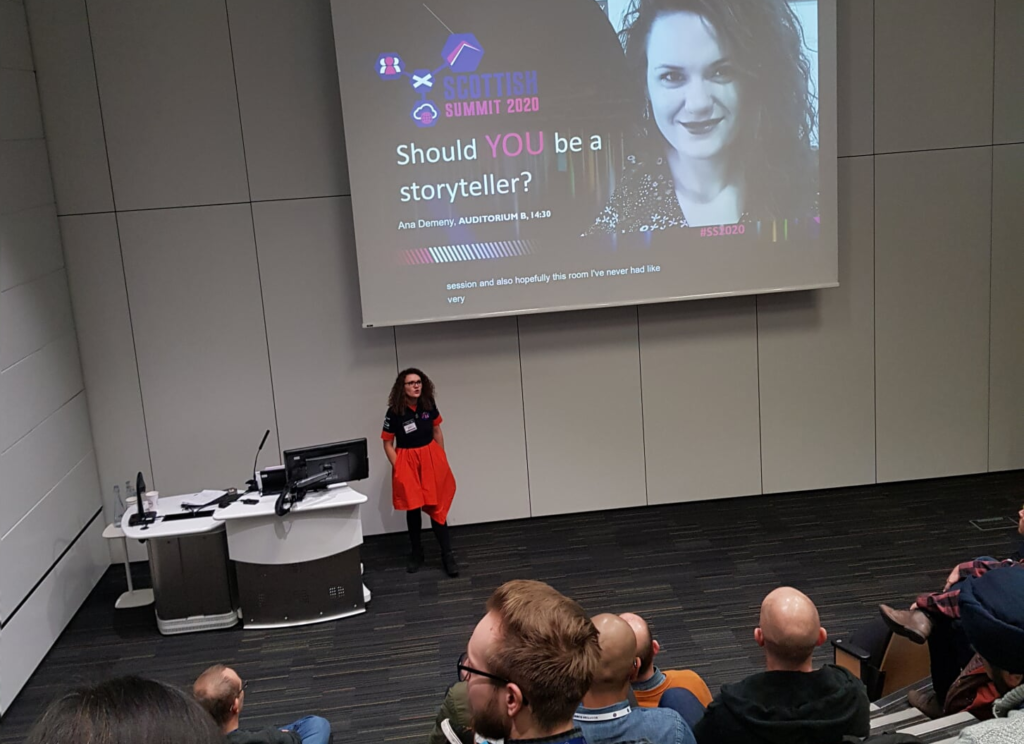Someone said it can’t be done. But they did it anyway. Scottish Summit 2020 was a success! This blog post is a summary of key takeaways for me from this great community event.
- Community
- Love
- Inclusive
- Professional
- Dedicated
- Hands on
These are the top keywords that come to mind when I tell my colleagues about Scottish Summit 2020. I also learned about PCF Controls for Dynamics 365 and UI Flows and RPA’s and no-code/low-code practises in the Power Platform, but what resonated the most with me was the feeling of being welcomed into a community of empathetic professionals.
Jon Levesque: KeyNote
The Key Note speaker Jon Levesque set the tone for the whole day by telling his story of how he made the journey from working at BlockBusters to working with Microsoft as Senior PM travelling the world as a public speaker and evangelist.

John talked about having passion, personal growth and creating a better life you yourself trough your work for and support from the community. He talk about family feeling and community revolution. Big words for a small tech conference you might think. I agreed. It felt grandiose and over excited. Now I know better.
I had two main goals for this event; I wanted to bring something new back to my colleagues and get inspiration for my own sessions later this year. Well – I got a lot more than that.
Megan V. Walker: Being active in the community

I was suppose to go to another session, but the speaker wasn’t there and the room was empty. Instead I followed a steady stream of people into the next conference room. “I choose speaker over session every time” I heard someone whisper as I sat down.
This session was perfect for me, learning about how to get started with a blog, with video, finding your passion and being authentic. The session was packed with small tips like
- Google will rate you higher if you post frequently
- Be consistent in branding – use the same profile picture everywhere
- Give people a chance to subscribe to your blog
- Be passionate about what you do
- Let your personality shine trough – and be yourself
The session felt more like a conversation then a presentation because Megan kept a conversation-like tone in her voice and didn’t go into full presenter mode. Refreshing. She is a great speaker and I understand why some attend her sessions just because it’s her. It’s pleasant, comfortable and feels good.
If you missed it the event it is now available as a free live stream:
https://scottishsummit.com/live-stream
Daniel Laskewitz: UI Flows & RPA 101

UI Flows are a new type of Flow in Power Platform. Robotic Process Automation (RPA) let you record common processes and automate them. This is useful for repetitive tasks that doesn’t need human attention or for integrating legacy application with could services.
I learned that UI Flows only support attended RPA’s at the moment, but Microsoft plan to release the unattended version later this year – maybe in April. UI Flows can be used for Desktop Applications – but users need to be administrator on their own computer for the desktop version to work. There is also a web version based on Selerium – but the interface is completely different from the Desktop version. This will also change this year as Microsoft is building a new platform from scratch.
To learn more about UI Flows look to Microsoft’s own documentation (https://flow.microsoft.com/en-us/ui-flows/) or just try it for yourself. The product is still free and in Preview until April – so be smart and give it a try sooner then later. The desktop version is surprisingly intuitive to use and it’s quite fun to play with. I used this video when I got started:
Ivan Ficko: PCF = Web resources v2.0?

Power Apps Component Framework (PCF) are used to enhance user experience in Dynamics 365 apps – right up my alley! There are two kinds of PCF Controls
Field Type
- Ex.: Make a text field for “Country” look like a drop down with flags
- Ex.: Replace “Yes” and “No” (two options) with pictures like “Thumbs Up/Down”
- Ex.: Suffix inside fields like “cm” or “kr” or “NOK”
Data-set Type
- Ex.: Look at accounts on a map
- Ex.: Enhance integrated SharePoint Library
- Ex.: Create a visual GANTT chart or timeline with projects or events
If you are comfortable with the Command Line approach the tool you should use for building these components is Power Apps CLI (https://docs.microsoft.com/en-us/powerapps/developer/common-data-service/powerapps-cli).
The best approach to get started is to look at https://pcf.gallery/ for existing controls and templates. Use VS Code as editor and have a go at it.
The components use React and Office Fabric UI witch enforce Microsoft’s already well defined user interface. Reuseability, maintaiability and upgradability are also key benefits. These components are not available for Power App Portals yet (not supported anyway) but Microsoft is working on it.
Andrew Welch: Ten Best Practices for No-Code / Low-Code Development on Power Platform

Andrew’s confidence and calm presence is not nudged an inch by the tantrum the projector/PC trough at the start of his presentation. With ease he hide some slides before taking us trough his session as if nothing had happened, coffee in hand and without a sweat. Experience is king.
Key takeaways
- Rename the Default environment “Apps to be deleted” – see what happens
- Think workloads when developing apps
- Better to develop new App from scratch then to bend business app to fit your needs.
- Prototyping is key – learn how to make a Proof Of Concept (POC) or Minimal Viable Product (MVP).
Master the art of the prototype
“Important enough to matter,
Andrew Welch, Scottish Summit 2020
but not so mission critical that it terrifies people”
I am a big fan of prototyping, trying out things fast and easy without spending more money and time then you can afford to “trough away”. Andrew talked about the importance of embracing visible impacts and easily implementable capabilities. Focus on something that impact many people, lots of money or has great business value.
Another interesting, and apparently controversial topic was “Discipline (and automation) in your ALM processes”. Only in a room full of nerds will a topic like Application Lifecycle Management (ALM) get such an emotional response.

I hope the slide deck will be published in full and that Andrew’s session will become available online soon. Until then let me try to explain:
In DEV environment
- Create a base solution holding all the basic entities you’ll need (managed)
- Build a custom solution “Airframe v1” (managed) and set it on top of your Base Solution
- The third solution hold “Your Customizations” (unmanaged)
- Move all to TEST/PROD environment
When making new changes in DEV - Merge “Airframe v1” and “Your Customizations” into one “Airframe v2” managed solution
- Delete the “v1″‘s in DEV
- Add on top “Your Customizations v2” (unmanaged)
- When satisfied move the “V2″‘s into TEST/PROD
- Delete the “v1″‘s from TEST/PROD
This make sense to me. If I got it wrong please let me know. This will be topic for discussion at our next Business Application TechHub meeting.
Ana Demeny: Should you be a storyteller?

First Ana tell us that she is not a good story teller. And she is right. There is really no straight line of thought to follow – but she answer the question posed in the session title with a big “Yes”. If you want to have an impact and be heard – tell a story, don’t simply tell facts.
Even if the session itself is a long procession of facts – and not a cohesive story – it still get the point across. Ana is apparently a fan of TED talks (as am I) and I love the video snippets she play for us. I will definitely look up Julian Treasure and his study of silence.

Lucy Bourne: Top 20 tips for Surviving Networking at Events

I met Lucy when she was a judge at Arctic Cloud Developer Challenge in Oslo this February – I went fan girl immediately upon impact. She lives and breathes community and embodies so much of whom I inspire to be. As you can tell I am not event remotely qualified to make an unbiased assessment of her session as fan girl, but let me leave you with two highlights from her 20 tips:
#19: Be Ballsy, like Howie
Howie defied his social insecurities and attended the Arctic Cloud Developer Challenge alone as a single-man-team. He knew he was not going to win and he knew only one or two people – but he joined in anyway! Ballsy!
# Inclusiveness
The volunteers, the organizers and speakers at community events and conferences can seem like a tight knit group from the outside, but they inspire not to be. To not sideline others and make everyone feel welcome; that’s what community is all about.
After Lucy finished her presentation there was still time and room for questions. This is when I was truly amazed of how personal and honest people got. That’s when I understood why John Levesque talked about that family feeling. People in this community care for one another – not just at a professional level – but are truly interested in you as a person.
Community
Somewhat star struck, but inspired by the thought of inclusion and community, I too felt comfortable approaching one or two of the many MVP’s and community leaders at Scottish Summit. We solved some problems, made connections and shared our stories. I feed welcome and included in this community and I know this is a space where I can thrive.
Thank you Marc Christie @Themarkchristie and Ian Connolly @Bearded365Guy for making the huge effort and making this happen. I have already submitted sessions for Power Platform Nordic Summit in Stockholm October 24th and can’t wait to contribute into this community.
Be First to Comment